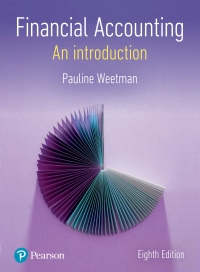On reviewing the financial statements, a companys accountant discovers that 20 per cent of the trade receivables
Question:
On reviewing the financial statements, a company’s accountant discovers that 20 per cent of the trade receivables (debtors) are irrecoverable. What will be the effect on the income statement (profit and loss account) and statement of financial position (balance sheet) when this omission is rectified?
(a) Profit before tax will decrease and trade receivables (debtors) will increase.
(b) Profit before tax will increase and trade receivables (debtors) will increase.
(c) Profit before tax will decrease and trade receivables (debtors) will decrease.
(d) Profit before tax will increase and trade receivables (debtors) will decrease.
The following information applies to question.
At the end of its first year of trading, a company has total trade receivables (debtors) of £20,000. The company accountant decides that there is an element of doubt about the ability of some of the trade receivables (debtors) to make payment. The accountant therefore sets up a provision for doubtful debts in the amount of £3,000. During the company’s second year of trading, trade receivables (debtors) previously regarded as doubtful, in the amount of £500, succeed in making payment to the company.
At the end of its second year of trading, the company has total trade receivables (debtors) of £40,000, including the remaining trade receivables (debtors) identified as doubtful at the end of the first year. On reviewing trade receivables (debtors) at the end of the second year, the company accountant concludes that a total of £4,000 of receivables (debtors) should be classified as doubtful.
Step by Step Answer:






